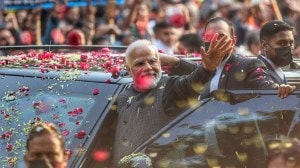Men make good news in Sikkim
New Delhi, November 17: For officials at the ministry of family welfare, there seems to be only good news ever since reports on non scalpe...

New Delhi, November 17: For officials at the ministry of family welfare, there seems to be only good news ever since reports on non scalpel vasectomy have been trickling in.
First it was Karimnagar district in Andhra Pradesh where the number of male sterilisation equaled those of female sterilisation last year. And now they cannot stop their glee over reports from Sikkim where male sterilisation figures have outnumbered those of tubectomies.
And all because of the painless, no stitches non scalpel vasectomy introduced in almost 18 states now. This is a revolution, says Dr R.M.Kaza who is NSV project advisor for the ministry vasectomies have never before outnumbered tubectomies.
In Sikkim 376 vasectomies and only 273 tubectomies were conducted till September 30. He said that this was a remarkable fete especially because of the difficult terrain in the state.
In the United Kingdom accordong to the professor of surgery in Maualana Azad Medical College, 40 per cent of sterilisations are vasectomies. Similar figures are seen in several parts of Europe too, he said. But in India such a leap has taken place mainly thanks to the new painless technique.
And even outside Sikkim, generally men seem to love the new method — especially in the hills, the cities and the villages. The only area where it is yet to attract men is the Gangetic plain which includes several districts of Uttar Pradesh, Bihar and Rajasthan, says Kaza who is now training surgeons all over the country while conducting marathon NSV sterilisation camps in various towns and villages. The last town he had a camp was Kargil where 17 people got NSVs done last week.
The results of the NSV programme are particularly of interest to the ministry because of its emphasis on increased male participation. “We are not discouraging tubectomies but speaking of the advantage of doing NSVs,” says B.Kishore, Asst Commisioner in the ministry. It is quite plain that while an NSV involves just a minor injury on the skin, the tubectomy involves a grievos injury in the abdomen, says Kishore.
“Just because a female sterilisation is done every day it does not become a minor procedure. It is a major abdominal operation which can lead to complications and even death. But an NSV involves neither bleeding not stitches,” says Kaza.
The shift to male participation is also a move to teach man his responsibility, says Kaza, adding that male sterilisation is just a small part of this responsibility. “There are larger areas like education of the offspring, health of the family and so on. But even in the small space of sterilisation, man has a greater responsibility because of the advantages of the procedure in comparison to female sterilisation,” he says.
In the matter of cost also, the ministry saves about three to four lakh rupees if it does 40,000 NSVs in place of the same number of tubectomies which need expensive laproscopes, says Kishore.
He said that 70 per cent of steriilsation used to be vasectomies before the Emergency. But ever since, male sterilisation had become almost a forgotten thing with all policy getting oriented towards promoting female sterilisation, said Kishore. Besides laproscopic surgery had made tubectomies very popular in the past decade.
But the new painless method introduced first in a district in Andhra Pradesh and which has now set a remarkable record in Sikkim will certainly help the new policy of encouraging male participation, he said.
Photos


- 01
- 02
- 03
- 04
- 05





























